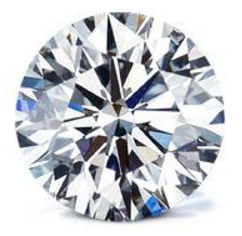When it comes to picking out an engagement ring, many people are simply unfamiliar with the aspects of ring anatomy. While the diamond itself tends to get the most attention, other aspects of the ring such as the setting and the band are also important. In order to help customers make the most informed decision possible when buying engagement rings online, we’ve put together this guide on ring anatomy.
 The Diamond
The Diamond
Typically, the diamond is the most expensive aspect of an engagement ring. Educating yourself on the four Cs of diamond quality will help you best understand the make up of diamonds. Paying particular attention to the cut, clarity, color, and carat weight of the diamond will help you make the best decision.
The Setting
 While many people consider the setting to be the ring’s style, it is actually the part that holds the diamond in place. Each diamond setting is manufactured to hold the specific diamond you select for an engagement ring. There are two setting types: prong and bezel. Specifically with round diamonds, there is the option of either four or six-prong. Although a four-prong setting will display more of the diamond, a six-prong setting provides a security advantage for holding the diamond in place. Pictured on the right is a four-prong setting .
While many people consider the setting to be the ring’s style, it is actually the part that holds the diamond in place. Each diamond setting is manufactured to hold the specific diamond you select for an engagement ring. There are two setting types: prong and bezel. Specifically with round diamonds, there is the option of either four or six-prong. Although a four-prong setting will display more of the diamond, a six-prong setting provides a security advantage for holding the diamond in place. Pictured on the right is a four-prong setting .
The Ring Band
When it comes to ring anatomy, the band is the second most prominent feature after the diamond. Bands are available in a variety of metals including white gold, yellow gold, rose gold, and platinum. Additionally, bands are created in a wide number of styles. Although solitaire settings are the most traditionally popular, today ring bands can be channel set, three stone, splitshank and more. In additon, ring bands are accented in halo or pave settings, as well as with gemstones. For more information on the different types of metals for ring bands, check out the Adiamor metal education page.
On the other hand, if you now feel ready to buy a diamond ring, start designing an engagement ring today!
